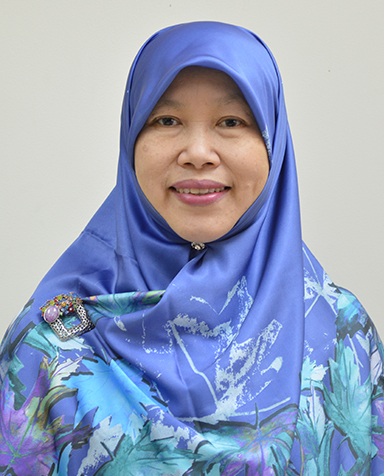Master in Food Safety
Food safety is a condition and efort to control biological, chemical, and physical hazards in food so as not to disturb, harm, and endanger human health and does not conflict with religion, belief, or culture of the community, thus it is safe for consumption (Indonesia Food Law No. 18 2012). Food safety is a global problem that causes 1 in 10 peopleto get ill, 420 thousand deaths every year, and results in losses to individuals, the food industry, and the economy. Food safety is also the foundation for food security, which can accelerate the achievement of Sustainable Development Goals (SDGs) coined by the United Nations, i.e., SDG 2: Zero Hunger, SDG 3: Good Health and Wellbeing, and contribute to SDG 6: Clean Water and Sanitation.
MASTER OF FOOD SAFETY DEGREE
The objectives of FS-MSP are to produce human resources capable of developing science-based and risk-based food safety management, regulations, and policies, as well as conducting progressive research for food safety. Risk-based food safety management refers to “the application of the three interactive components, i.e., risk assessment, risk management, and risk communication, which serve to develop an estimate of the risks to human health and safety, to identify and apply the appropriet preventive measures and to communicate Through 39 credits of teaching and learning activities, graduates are expected to be able to evaluate food safety hazards in a food supply chain, build a food safety control system in the industry with a cutting- edge approach, formulate risk- and scientific-based food safety regulations and/or policies at national and/or international levels, and communicate in scientific forums pertaining food safety.
Program outcomes of Food Safety Master Program has fulfilled the Indonesian Qualification Framework (IQF) for Master program (level 8) which covers knowledge, technical skills and managerial skills. Specifically, students completing this program will be
- Able to solve food safety problems with a science-based and risk-based approach
- Able to manage food safety research to strengthen the food safety management system in Indonesia
- Able to formulate and communicate appropriate food safety policies to stakeholders at the national and international levels
Expected Learning Outcomes
- Knowledge
- Able to evaluate biological (microbiological) and chemical hazards, as well as their control technologies in the food industry and supply chain through technical and critical approaches
- Able to assess and analyze the risks of biological (microbiological) and chemical hazards in food to public health, business and trade, and the economy
- Able to evaluate food safety management systems at the producer level as well as at the national and international levels (food safety policies and regulations)
- Technical Skills
- Able to design food safety management systems for the food industry and supply chain in accordance with the latest national and international standards and evaluate the implementation of food safety management systems in the food industry
- Able to conduct regulatory impact assessments, develop food safety regulations and policies and communicate them to stakeholders at the national and international levels
- Managerial Skills
- Able to plan and manage resources to conduct research and development to improve the safety of food products from microbiological, chemical, physical hazards
- Able to disseminate, communicate, and convince communities at the national and international levels to implement or adopt research results on food safety
Semester 1
- PPS1503 English
- KPN1501 Food Safety Principles
- STA1514 Statistics for Engineering
- KPN1502 HACCP and Risk-Based Safety Management System in Food Industry
- KPN1503 Scientific Research and Writing
Semester 2
- KPN1504 Food Safety Risk Assessment
- KPN1505 Good Food Safety Regulatory Practices
- KPN1621 Characteristics and Control of Emerging Foodborne Pathogens
- IPN1644 Food Toxicology
- TIN1671 Agroindustrial Supply Chain
- TPN1603 Halal in Food Industry
Semester 3
- KPN1601 Food Safety Risk Communication
- KPN1691 Colloquium
- KPN1692 Research Proposal
Semester 4
- PPS1691 Thesis Seminar
- PPS1692/PPS1695/PPS1698 National Scientific Publication/ International Scientific Publication /Scientific Publication in International Proceeding
- KPN1693 Thesis
- KPN1694 Thesis Examination
KPN1501 Food Safety Principles, 3(3-0)
Discusses the definition and principles of food safety, the application of the principles of ALARA (as low as reasonably achievable), ALOP (appropriate level of protection) in defining safety, the relationship between ALOP and FSO (food safety objective) and PO as well as microbiological criteria (for microbiological hazards) as well as with NOAEL, LOAEL, ADI and TWI (chemical hazards). Various types of food safety hazards, both conventional and emerging, have an impact on public health (extraordinary incidents of food poisoning) and competitiveness in trade (product recalls, export rejection). In this course, risk analysis tools will be introduced which are important in developing food safety management both at the producer level and at the country level. Security challenges such as climate change, sustainability and novel foods will also be discussed.
Ratih Dewanti-Hariyadi,
Nuri Andarwulan, Hanifah Nuryani Lioe
KPN1502 HACCP and Risk-Based Safety Management System in Food Industry, 3(3-0)
Discusses risk-based food safety management systems in food industry applied in national and international. The discussion also includes principles in Hazard Analysis Critical Control Point (HACCP), Threat Analysis Critical Control Point (TACCP), Vulnerability Assessment Critical Control Point (VACCP), along with pre-requisite programs (PRP). Various certification systems, especially FSSC 22000 certification and its application in various types of food industry, are discussed in this course. Assignments for students are designed so that students are able to compile and detect errors in HACCP plans in the food industry.
Winiati P Rahayu
Ratih Dewanti-Hariyadi, Dian Herawati
KPN1504 Food Safety Risk Assessment, 3(3-0)
Discusses the risk analysis framework in general and its application in food safety. The discussion includes risk assessment activities for microbiological and chemical hazards, both qualitatively such as risk profiling and risk ranking for prioritization purposes, as well as quantitative assessments for risk ranking or risk estimation. Discussion of quantitative risk studies, both with point estimates (deterministic) and probabilistic, includes data analysis for deterministic and probabilistic risk studies, determination of ML, MRL based on ADI, TDI and PTWI for chemical risk studies, dose-response determination for microbiological risk studies. Exercises in conducting risk assessments for chemical hazards and/or microbiological hazards will also be covered.
Lilis Nuraida
Harsi Dewantari Kusumaningrum, Puspo Edi Giriwono
KPN1505 Good Food Safety Regulatory Practices, 3(3-0)
Discusses good regulatory practices applied in the development of food safety policies and/or standards and regulations at both national and international levels, as well as regulatory impact assessments carried out before a regulation is enacted
Purwiyatno Hariyadi
Nuri Andarwulan, Feri Kusnandar
KPN1621 Characteristics and Control of Emerging Foodborne Pathogens, 3(3-0)
This course specifically discusses the characteristics and control of pathogens important for food safety (bacteria and/or their metabolites, viruses) in various food commodities (milk and dairy products, meat and processed meat products, poultry meat and its derivative products, vegetables and their processed products, fruit -fruits and their derivatives, ready-to-eat foods, commercial sterile products, products for special consumers etc.)
Siti Nurjanah
Ratih Dewanti-Hariyadi
KPN1601 Food Safety Risk Communication, 2(2-0)
This course will discuss what is meant by risk communication in food safety (KRKP): why it is important, its relation to risk perception, its uses and applications; principles of good risk communication (trust in information and institutions, openness, transparency); factors that must be considered before KRKP (understanding the food safety issues faced: danger, risk/benefit, quality of available data, etc., understanding target audiences, risk history, understanding communicator responsibilities) as well as realizing KRP in an action/activity.
Puspo Edi Giriwono
Didah Nur Faridah
KPN1503 Scientific Research and Writing, 3(2-1)
This course discusses the basics of research design and techniques for presenting scientific work based on the rules of good and correct writing in Indonesian, both written and oral presentation. Lecture material includes scientific thinking techniques, scientific ethics and plagiarism in conducting scientific research and writing. Apart from that, statistical applications (@risk tools, R?, meta-analysis, …other statistics) are also discussed in research based on primary and secondary data. Written presentation techniques are aimed at training in writing research proposals, seminar papers, publication manuscripts and theses. Oral presentation techniques include preparation of presentation materials and communication techniques in scientific meetings, such as seminars, colloquiums and thesis examinations, including preparation of materials for oral and poster scientific presentations.
Feri Kusnandar
Nurheni Sri Palupi, Hanifah Nuryani Lioe
KPN1691 Colloquium, 1(0-1)
The colloquium facilitates students to share ideas in developing research designs and methods. Research proposals that have been approved by the Supervisory Commission are presented through a colloquium in front of colloquium participants consisting of IPB Postgraduate School students and supervisors.
Azis Boing Sitanggang
Uswatun Hasanah, Nur Wulandari



Fakultas Teknologi Pertanian (FATETA) Institut Pertanian Bogor.
Kampus IPB Darmaga
Jl. Lingkar Akademik, Jawa Barat 16680,
Telp./faksimili : (0251) 8626725
email : dfst@apps.ipb.ac.id
website : fst.ipb.ac.id
